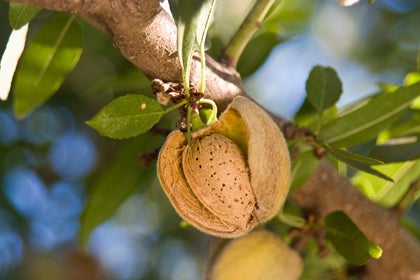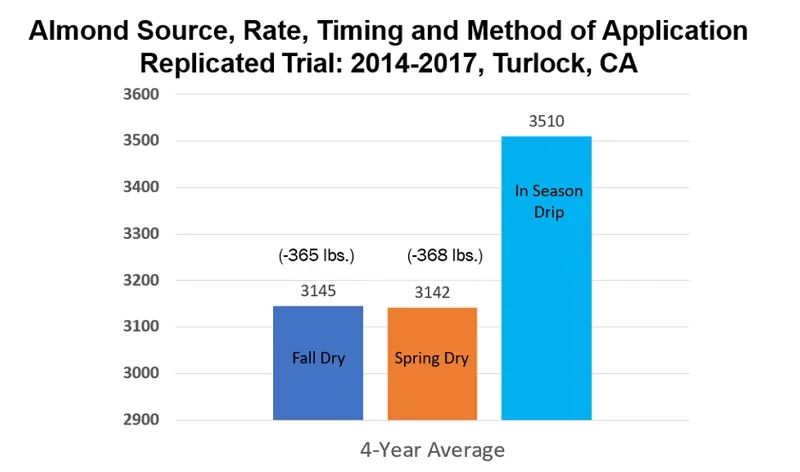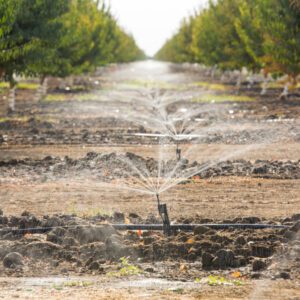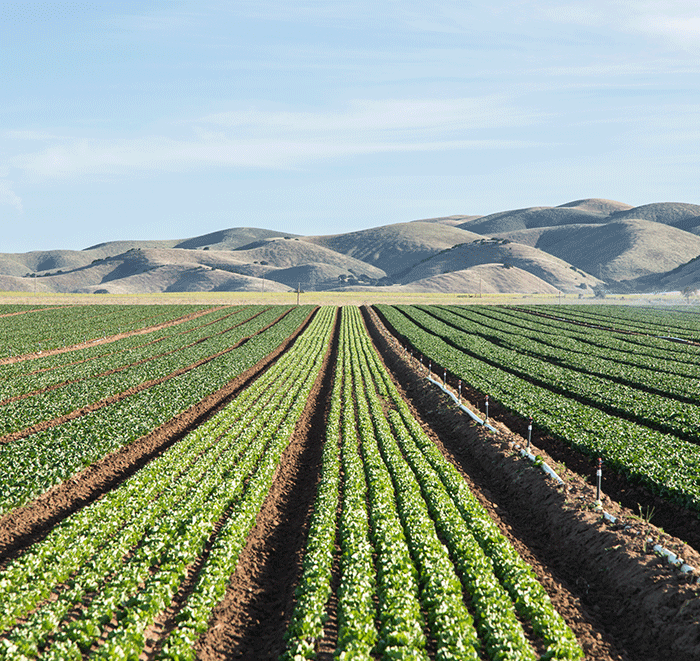

Almond K Nutrition: Will Saving Now Mean Paying Later?
With weak almond prices this spring, growers are examining the bottom line very closely and looking for ways to trim costs. Last fall, many found that building soil potassium (K) levels with a single, high-rate application of dry granular sulfate wasn’t economical.
As the soft almond market continues in 2024, growers are probably considering reduced-rate application methods, fertigation and foliar applications of K fertilizer.
Growers may be asking themselves these important questions:
- Is fertigating potassium more efficient than dry granular application?
- How do the two approaches compare pound per pound of K?
- If I intended to apply 400 lbs. of granular potassium sulfate (SOP), how much K would I need to apply through drip to get the same results?
There are no “one-size-fits-all” answers to these questions, because of the many variables from field to field.
Generally, applying potassium fertilizers through low-volume irrigation systems produces better results than banding or broadcast applications of dry potassium sources.
As early as the late 1980s, research in drip irrigated prunes evaluated potassium placement and application method on leaf K response and potassium movement in the soil profile. Potassium sulfate applied through drip for about 90 days was compared to twice the rate of potassium sulfate as a subsurface band and to an untreated control. Results showed significantly higher leaf K levels in the drip-applied K treatment than in the double-rate, soil-applied band treatment.
In a companion trial, drip-applied potassium sulfate was compared to equal rates of granular potassium sulfate broadcast applied into the wetted area and dry potassium sulfate hand applied below each emitter.
Results were comparable, whether the K was injected into the drip irrigation system or placed dry, directly below the emitters and irrigated in. Both techniques were more effective at elevating summer leaf K levels and moving K deeper in the soil profile than traditional surface applied dry potassium.
In 2014, Wilbur-Ellis started a four-year replicated trial with an independent researcher comparing three different potassium programs:
- 500 lbs. sulfate of potash-directed band in the fall (250 lbs. K2O)
- 500 lbs. potassium nitrate directed band in March (225 lbs. K2O)
- 128 lbs. K2O applied through the drip split into 4 equal treatments applied in March, April, May and June
The four-year average, below, showed a significant yield gain from the drip-applied liquid potassium compared to the double rate of K2O applied as dry granular potassium.

Which irrigation system is best for potassium fertigation?
Again, there is probably no single best answer.
Almond research from the late 1990s may shed some light on this question. Various potassium fertilizers were applied at several different rates through single drip line, double drip line or micro-sprinklers. Regardless of the source or rate applied, in 80% of the comparisons the highest yields were from the micro-sprinkler irrigated trees. The soil in the study was described as a well-drained, Arbuckle gravelly loam.
To enhance potassium uptake efficiency, it is important to irrigate often, supporting an abundant supply of shallow feeder roots. Soil K levels are almost always highest in the shallow part of the soil profile. Prolonged dry down between irrigation events forces plants to forage deeper in the soil profile for moisture where nutrient concentrations are lower.
When should fertigation and foliar K applications be made?
Fertigation and foliar K applications should begin about 30 days after bloom as the canopy expands and transpiration rates increase. Peak demand for K is between about March 20 to May 20 (about 2.5-3 lbs. K2O/acre/day). About 120 days after bloom, 75% of the season’s total amount of potassium has already accumulated in the fruit. This coincides with mid to late June depending on the growing area.


Why use dry granular if yields are better with drip-applied potassium?
Consider this fact: 1000 lbs. almond meat removes about 100 lbs. of fertilizer K2O/acre. That means almonds yielding in the range of 3000-5000 lbs. nut meat are removing about 300-500 lbs. K2O per acre per year!
If your soil test results show potassium levels are declining, it is time for higher rates of lower-cost dry granular potassium. Waiting until the crop is in a downward spiral may risk yield loss and require aggressive rebuilding of soil K levels. Eventually, soil potassium will be depleted, particularly under drip irrigation where a compact root system reaches a limited area of soil.
Dry granular fertilizer will eventually be needed in most almond orchards to keep soil K levels above the critical concentration (the value that concedes a 10% loss in growth and yield). In the meantime, using lower rate fertigation and foliar application will be critical for profitable almond production.
What options are there for potassium that can be fertigated?
- Potassium carbonate has the highest analysis of all liquid K sources (0-0-32), at 4 lbs. K2O/gal and no application rate restrictions so it is a preferred source. It also is strongly alkaline and an excellent source on acid soils.
- Potassium Thiosulfate or KTS is a high analysis liquid K source (0-0-25-17S) that blends exceptionally well with UAN but is restricted to 3-5 gpa/ application for young trees, and 5-10 gpa/application for mature trees.
- TILL-IT® REKOIL 0-0-19 is a unique blend of pot carb and KTS in a ratio that will have a net neutral effect on soil pH. TILL-IT Rekoil may be applied up to 15 gpa for young trees and up to 30 gpa for mature trees.
- TILL-IT® KOMPOUND is a liquid potassium source 0-0-19 with potassium acetate and potassium thiosulfate. Research has shown that the acetate component may be a stimulant for beneficial rhizobacteria. It supports energy production in plants and can boost plant metabolism.
- Potassium sulfate or SOP, as either liquid ESP 1-0-8-2.7S or soluble fines 0-0-52-17S for use in gypsum solutionizer machines, is an excellent source of K with no rate restrictions, no concerns over reacting with hard water and having no effect on soil pH.
- Potassium chloride or MOP liquid is a 0-0-12 or 13 and is the least expensive but carries a chloride risk. Liquid MOP can be used safely on orchard crops if soils are well-drained, soil and water salinity levels are low, and the user is willing to watch soil and plant tissue chloride levels. Potassium chloride should never be used for foliar applications.
It is always best to stay ahead of crop demand rather than attempt to play catch up later in the season. Later season applications may be beneficial for supporting bud differentiation that usually coincides with the current season’s hull split to post-harvest period.
Reach out to your local agronomist for almond nutrition support including the right potassium sources for your application system and budget.

